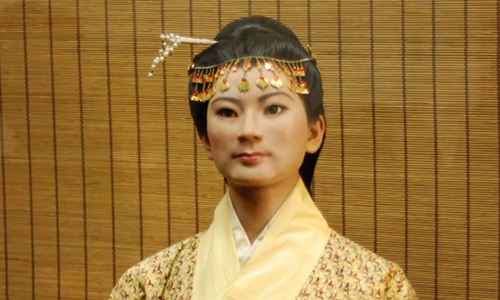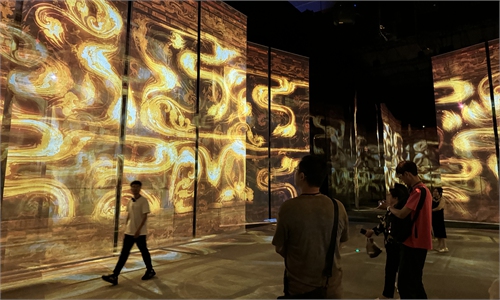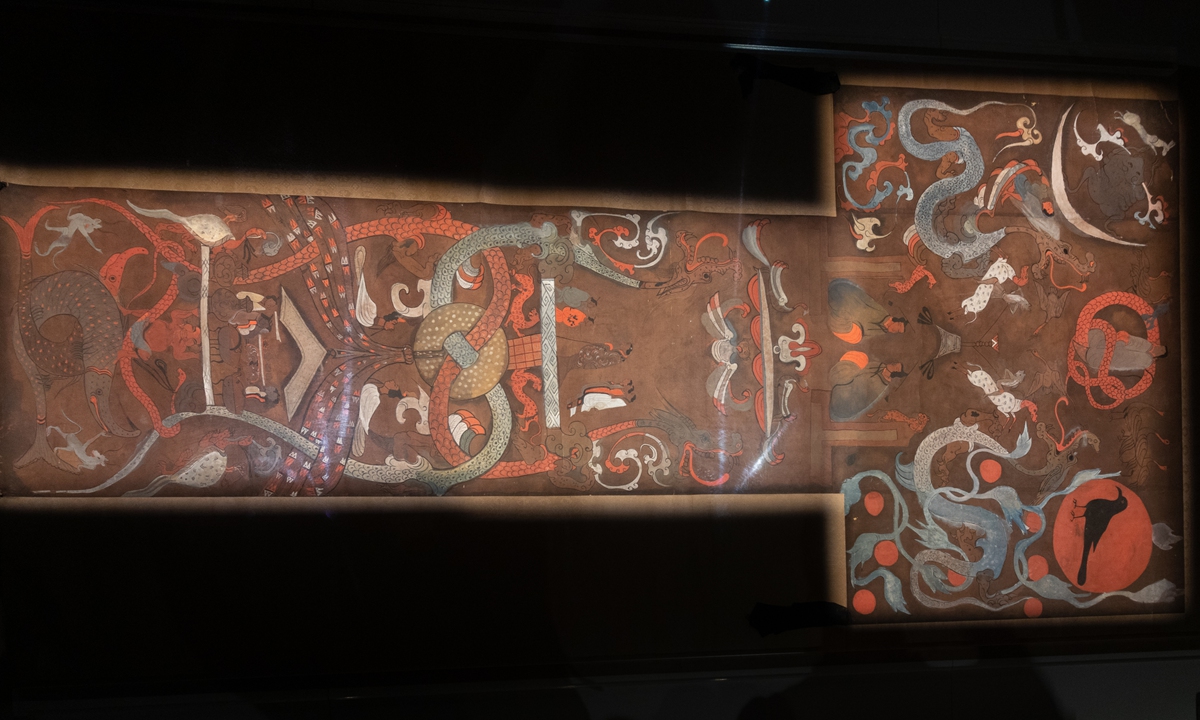
T-shaped painting on silk:
The T-shaped silk painting, 205 centimeters long, was a banner carried at the front in the funeral procession, and it was then laid on the innermost coffin at the burial. With the ink drawing and heavy-colored drawing techniques, the painting is divided into the heavenly world, the human world and the underworld from the top to the bottom.
Fifty years ago, not only the archaeological community but also ordinary people were stunned by the excavation of the Mawangdui Han Tombs. Among the findings is a remarkable discovery known as China's "Sleeping Beauty" (Lady Xin Zhui), an over 2,100-year-old lady who looks nearly as good as she did when she was buried after dying at the age of about 50, during China's Western Han Dynasty (206BC-AD25). The world has marveled at the mystery behind her body, as well as the numerous precious treasures unearthed from the tombs, including textiles and bamboo and silk manuscripts.
In this Mawangdui trilogy, the Global Times culture desk explores the decades of work in unearthing, research and development that can be seen as a milestone of China's great archaeology achievements.
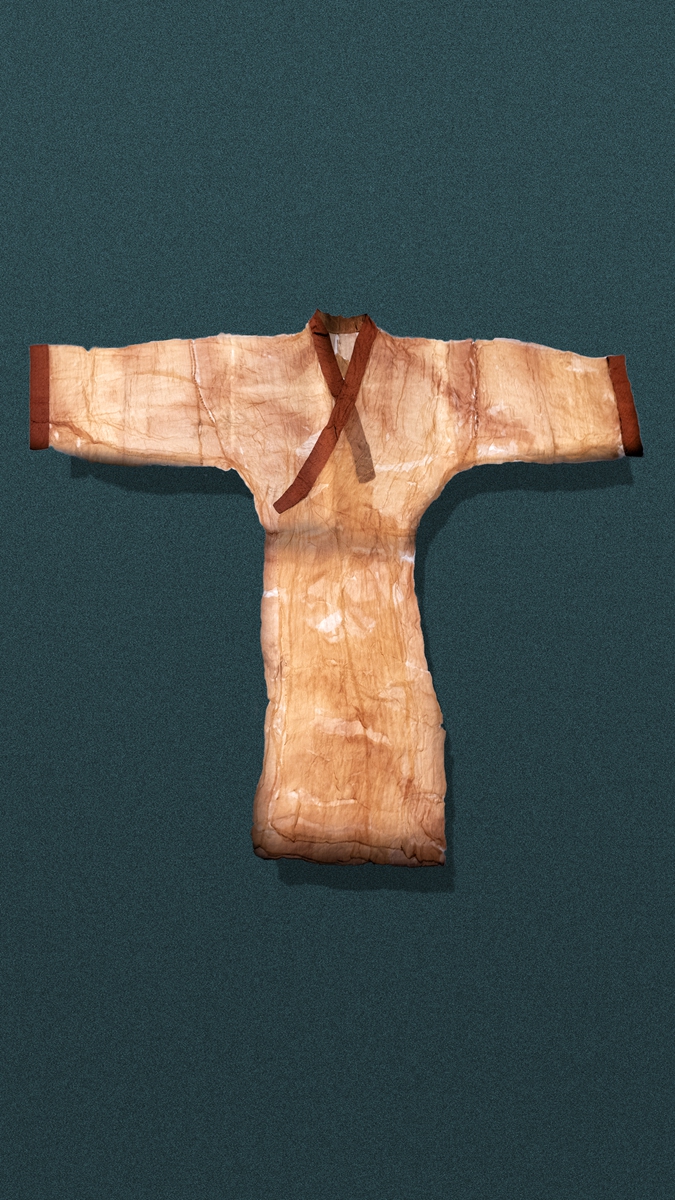
Plain unlined gauze gown:
The gauze gown, with a length of 128 centimeters, weighs only 49 grams. This fabric, as thin as a cicada's wing, was described by the people of the Han Dynasty as "light as clouds and mist." This piece of clothing, the earliest, thinnest and lightest discovered to date, showcases Western Han weaving technology at its peak.
All of aforementioned treasures, unearthed from the Mawangdui Han Tombs 50 years ago, continue to stun numerous visitors every day at the Hunan Museum in Changsha, Central China's Hunan Province. These items are just a tiny part of more than 20,000 artifacts excavated from the Mawangdui Tombs, which embody the Han dynasty's grand vision of afterlife transformation, rooted in sophisticated cosmological and philosophical conceptions of life and the universe.
Yu Yanjiao, director of the Research Center for Exhibition and Collections of Mawangdui Han Dynasty Tombs at the Hunan Museum, told the Global Times that the daily life objects and dietary utensils unearthed reflect the living habits and dietary customs of ancient Chinese people. These customs have been passed down through generations and are still preserved in many places today, demonstrating the continuity of Chinese civilization in terms of lifestyle habits.
With the unprecedented discoveries in the tombs shocking the world, the 50th anniversary of the archaeological excavation of the Mawangdui Han Tombs has emerged as one of the most significant events in the Chinese and even international archeological field. To fully showcase the fruitful results in the preservation, research, and utilization of the archaeological excavation of the Mawangdui Han Tombs, an international academic seminar kicked off in Changsha in August.
Gao Chenglin, deputy head of the Hunan Provincial Institute of Cultural Relics and Archaeology, told the Global Times that the 50th anniversary of the archaeological excavation of the Mawangdui holds significant meaning, not only as a testament to the rich cultural heritage of China but also as a model for interdisciplinary collaboration in archaeological endeavors.
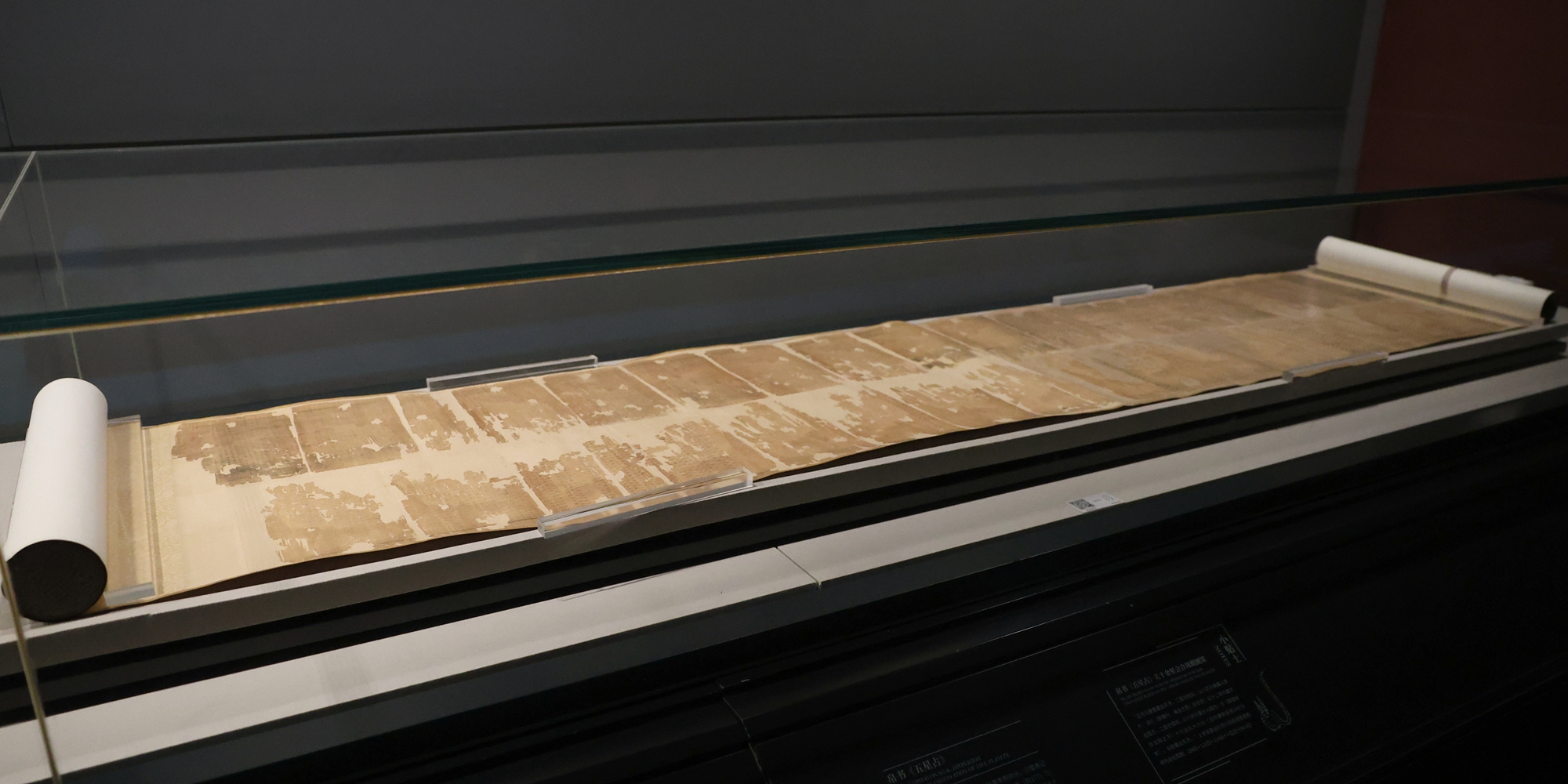
Book copied on silk, Divination Based on the Observation of Five Planets:
This is the world's oldest existing work of astronomy, and is made up of two parts, the divination text and the positional tables. The positional tables record the positions of Venus, Jupiter and Saturn for 70 years. This -information reflects the advanced -astronomical achievements made at the time in China.
For the past 50 years, over 4,000 scholars have devoted themselves to the study of the Mawangdui tombs, achieving the first truly multidisciplinary collaborative archaeological study of science and technology in the history of Chinese archaeology.
A comprehensive inventory of the artifacts unearthed from the tomb revealed a total of 26,937 items. The human remains, including the well-preserved body of Lady Xin Zhui, have been effectively protected through a comprehensive three-tiered approach at the holistic, cellular, and molecular levels, supported by a robust team from the Institute of Archaeology, Chinese Academy of Social Sciences, as well as the participation of a local medical college in Hunan Province in the preservation of the ancient corpses
"This model of national-level coordination and expert guidance has been inherited and promoted in other significant archaeological discoveries across China," Gao noted. The fruitful archeological discoveries and comprehensive research into the Mawangdui tombs have garnered significant attention both domestically and internationally.
